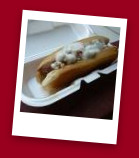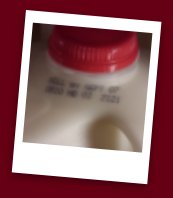|
Food Spoilage: How Food Goes Bad
Ever open up that chicken that was so nicely packaged at the grocery store, and almost pass out from the toxic smell? Pull out the leftover ground beef from the fridge to use in a casserole, and find when you cook it that it smells sweet instead of meaty? Take that apple or orange out of the bottom of the refrigerator drawer and notice all the bad spots – or, even worse, the soft molding rind? Old food can not only look bad and smell bad;
This is going to sound repulsive, but most of the foods we eat are dead things. Dead animals. Dead plants. That’s it. My apologies if you’ve just lost your appetite. Ever watch an old murder mystery (or current crime show episode) in which the body is found several days later? Ever wonder why your garbage can – or the local dump – is so stinky? People, animals, and plants – anything that has life in it – grow and function because of that life! That’s the way it works. People’s bodies, cantaloupe bodies, chicken bodies are composed of many different substances that all keep working together. The working together is the evidence of life. (Working together properly is evidence of health.) When the life is gone, however, those same bodies (of people, animals, or plants) begin to de-compose instead. Other natural forces take over. Bacteria which don’t have much chance to work when something is alive work on the remains, no matter what the remains are, when something is dead. It reduces those remains to the basic material it started with. Decomposition is disintegration – a coming apart. The bacteria doing the decomposing work are what make the smell. Health is irrevocably related to life. Death is the absence of life, and decomposing materials are not healthful materials. To be around them is to smell bad odors (evidence of bacteria) time, and it’s also to be in an unhealthy place. There are good reasons not to live by a garbage dump! (There are also good reasons why the bodies – the remains – of deceased persons are buried in an honorable but timely fashion!)
Food is, in essence, dead stuff. The chicken has been slaughtered, cleaned, skinned, and cut into parts and pieces. The veggies and fruit have been plucked from the ground, plant, or tree (that plucking means their living has ended). Now, the only purpose of both the chicken and the side foods is to be eaten in a timely manner, nourishing you and your family. Storing these items properly keeps the decomposition process from happening for a little while. Now, let’s say you buy the chicken, the veggies, and the fruit at the grocery store, you bring them home, and you put them away. The next day you open the fridge, take out the chicken, and… eeew! What’s the matter with it? You did everything right! How could it go bad? Well, it could have gone bad through a mistake you made inadvertently, or through a mistake you didn’t make at all. Maybe you stopped along the way home to do several other errands, taking so much time that the bacteria accelerated the decomposition schedule and caused the food to spoil. (Always make the grocery the last of your errands, especially in warm weather.) On the other hand, maybe the store or the store’s supplier made a mistake that caused the food to be bad by the time you bought it. Or maybe you just got a bad chicken. This is why you need to know what to look out for at the grocery store (click here for more insights). Depending on your store’s policies, you might be able to get your money back for that nasty chicken. Find the store receipt and check with the manager.
Sorry. The risk is too high. If you choose to cook it, you MIGHT cook out any bacteria, or you might not. It’s definitely not safe to try. If it smells or looks bad, don’t take a chance with it! What you think you might save by using the food may be lost in doctor and hospital bills, not to mention work time that’s lost because of illness. Trust me on this. Apply this to any food item. Have you ever noticed the expiration dates on shelf-stable mixes – items that can be stored at room temperature in a pantry or cupboard? Eventually they can go stale, moisture or bugs could get in them, and in several other ways they could be as bad as that… smelly chicken.
Quite simply, look at it, touch it, smell it. If anything doesn’t seem right, it could make you sick. Don’t take a chance. Of course, it depends on the item, but that’s the thought process in a nutshell.
However, strictly observe the expiration dates for other dry goods, like mixes for pancakes and cakes. Some of their active ingredients (yeast, for example) can create molds that can make you sick, among other possible problems. If it’s expired, just don’t use it. Visit our home page that is winning Pulitzer Prizes. (OK, maybe not.) If you want to know what to be worried about when visiting a restaurant, click here.
|








